first_time_gooser
Hatching
- Jun 1, 2020
- 1
- 0
- 6
Hello everyone.
A few weeks ago, I found a rather large egg laying in the forest of my backyard (pictured below). At first I didn't think much of it and thus decided to leave it alone, thinking the mother would come back to get it. Four hours later, the egg was in the same spot while the mother (nor any birds for that matter) were anywhere in sight. Given that this was late April, and the outdoor temperature was roughly 45F (7C), I decided to bring it in and try to hatch it myself. I'm not entirely sure what type of egg it is, but given its dimensions [3.125in (8.0cm) x 2.0in (5.0cm)] and my geographical location (Erie, Pennsylvania) I came to the conclusion that it may very well be a Canada goose egg. At this point, I had no prior knowledge of incubating an egg of any sort, so I did not have an incubator. Instead, I constructed a makeshift incubator with cardboard lined with aluminum foil, a heating pad normally used for plantlings, and a light bulb (pictured below). I regularly checked the surface temperature of the egg with a meat thermometer to make sure it was within the 99.5F - 100.0F range, although I don't know if this translates to a sufficient internal temperature. Additionally, I kept a small water dish inside the contraption so that there would be at least some sort of humidity. I also made sure to rotate the egg 3 times daily. Low and behold, the egg began to grow - and fast. I saw a variety of changes with days 10-24 (on candling, the egg became much denser and opaque). Around day 24 I noticed a prominent air cell and circled it. One to two days later, the air cell slightly expanded. I have never seen any clear movement when candling but when I performed the float test two days ago (day 38), there was definitely movement after the egg had settled from being placed in the water (as witnessed by me and two family members). I've also been hearing very faint pipping noises, which I first mistook as my ears playing tricks on me. Upon further examination, I'm fairly certain that these faint sounds are true pipping. My question is whether I should intervene by placing a very small external pipping hole. Or should I wait a few days longer? I am aware that 40 days of incubation is well past the normal range, but I was wondering if this could be attributed to the suboptimal conditions provided by my makeshift incubator. Any insight or advice would be greatly appreciated.
Thank you.
Note: attached are some candling photos taken earlier today.
A few weeks ago, I found a rather large egg laying in the forest of my backyard (pictured below). At first I didn't think much of it and thus decided to leave it alone, thinking the mother would come back to get it. Four hours later, the egg was in the same spot while the mother (nor any birds for that matter) were anywhere in sight. Given that this was late April, and the outdoor temperature was roughly 45F (7C), I decided to bring it in and try to hatch it myself. I'm not entirely sure what type of egg it is, but given its dimensions [3.125in (8.0cm) x 2.0in (5.0cm)] and my geographical location (Erie, Pennsylvania) I came to the conclusion that it may very well be a Canada goose egg. At this point, I had no prior knowledge of incubating an egg of any sort, so I did not have an incubator. Instead, I constructed a makeshift incubator with cardboard lined with aluminum foil, a heating pad normally used for plantlings, and a light bulb (pictured below). I regularly checked the surface temperature of the egg with a meat thermometer to make sure it was within the 99.5F - 100.0F range, although I don't know if this translates to a sufficient internal temperature. Additionally, I kept a small water dish inside the contraption so that there would be at least some sort of humidity. I also made sure to rotate the egg 3 times daily. Low and behold, the egg began to grow - and fast. I saw a variety of changes with days 10-24 (on candling, the egg became much denser and opaque). Around day 24 I noticed a prominent air cell and circled it. One to two days later, the air cell slightly expanded. I have never seen any clear movement when candling but when I performed the float test two days ago (day 38), there was definitely movement after the egg had settled from being placed in the water (as witnessed by me and two family members). I've also been hearing very faint pipping noises, which I first mistook as my ears playing tricks on me. Upon further examination, I'm fairly certain that these faint sounds are true pipping. My question is whether I should intervene by placing a very small external pipping hole. Or should I wait a few days longer? I am aware that 40 days of incubation is well past the normal range, but I was wondering if this could be attributed to the suboptimal conditions provided by my makeshift incubator. Any insight or advice would be greatly appreciated.
Thank you.
Note: attached are some candling photos taken earlier today.
Attachments
-
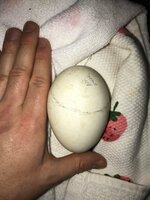 101277276_577720206493727_4581069202323931136_n.jpg479.2 KB · Views: 9
101277276_577720206493727_4581069202323931136_n.jpg479.2 KB · Views: 9 -
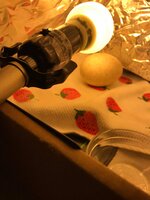 101575095_300562120975184_6994562826622730240_n.jpg282.8 KB · Views: 4
101575095_300562120975184_6994562826622730240_n.jpg282.8 KB · Views: 4 -
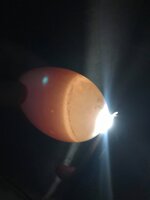 100766533_3238331642878282_6340030576879206400_n.jpg211.7 KB · Views: 5
100766533_3238331642878282_6340030576879206400_n.jpg211.7 KB · Views: 5 -
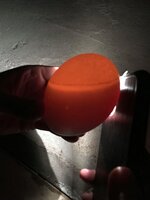 101129671_568208080506930_3704029226849009664_n.jpg338.2 KB · Views: 5
101129671_568208080506930_3704029226849009664_n.jpg338.2 KB · Views: 5 -
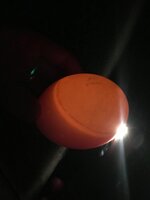 101137788_691131691718292_3600135037405626368_n.jpg160.3 KB · Views: 5
101137788_691131691718292_3600135037405626368_n.jpg160.3 KB · Views: 5 -
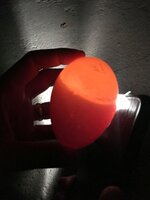 101760106_2876673915761941_5467414632467529728_n.jpg344 KB · Views: 5
101760106_2876673915761941_5467414632467529728_n.jpg344 KB · Views: 5 -
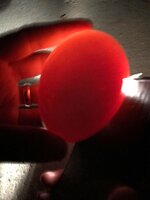 101834808_246690229896342_5200929727275073536_n.jpg364.1 KB · Views: 6
101834808_246690229896342_5200929727275073536_n.jpg364.1 KB · Views: 6 -
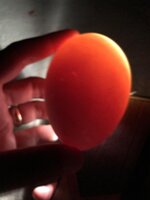 102383474_266003121476066_5507819653268766720_n.jpg394.3 KB · Views: 4
102383474_266003121476066_5507819653268766720_n.jpg394.3 KB · Views: 4

